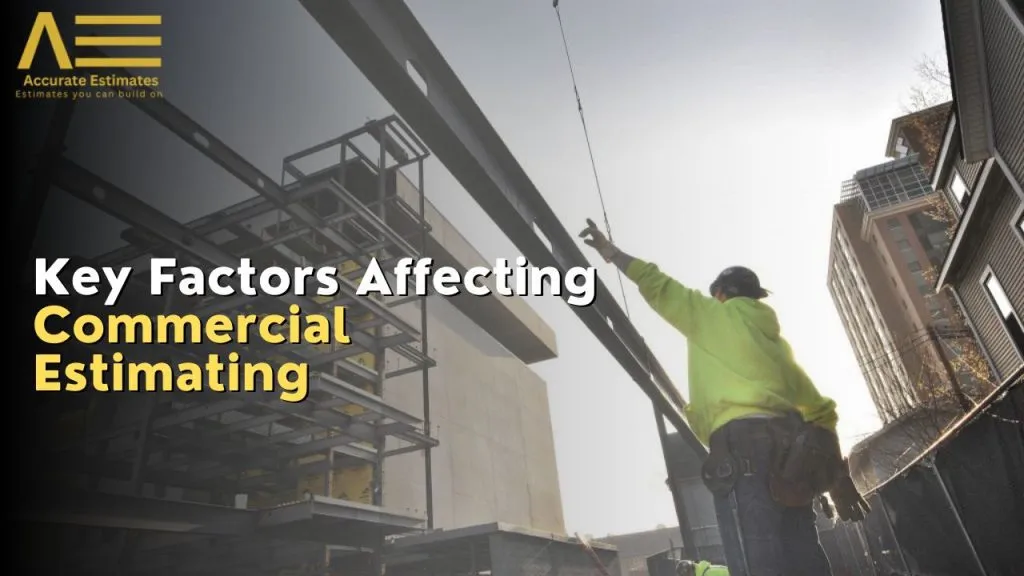Commercial Construction Costs Per Square Foot in the US
One factor known as the “cost per square foot” metric should be understood very carefully to manage the construction expenses.

There are some key factors explaining why;
Factors Influencing Costs
A type of building’s design, location, or services plays a significant role in predicting its cost, so the different types have different costs due to different designs and services. Materials and finishes are the second factor affecting the cost of buildings, as is the material used for construction, whether it is cheap or high quality.
Labor costs similarly, labor is of 2 types as well, local or skilled. Skilled ones cost more per square. In building design, the designs or architecture are different for buildings, some have a very simple layout, whereas others have a very complex one, and of course, the complex one costs more per square.
Likewise, regulations and codes, following the regulations is also an important element that impacts the cost, and industry benchmarks also play a significant role in determining the cost of the building.
Regional variations
Geographic location and regional factors also influence the cost of materials and labor. For instance, in some rural areas, the costs of materials or labor will be relatively less than in well-developed urban well-developed areas. Economic conditions are another factor that influences cost.
Trends affecting costs
- Technological advancements: for construction, it is better to use advanced technologies, but this can be costly due to the many upgrades and efficiency.
- Sustainability and green building: the demand for sustainable and green buildings is high, so they cost a lot. However, with the high cost, there is a benefit to a long-term operation.
- Economic fluctuations: the fluctuations of costs or the market price can overall influence the cost predicted.
These factors should be considered and checked throughout the project to have no negative impact on the project and if any problems arise a solution is already implemented.
Factors Influencing Commercial Construction Costs

Type of building
The type of building significantly affects the cost of the building per square foot, such as;
- Office buildings; such buildings are designed to look more attractive than simple ones and so of course have a complex design that costs around 150-500 dollars per square foot.
- Retail spaces; there are many stores or buildings with a simple exterior, but the interiors are kept fancy or complex, and this is mostly found in stores that cost around 100-300 dollars per square foot.
- Warehouses; the warehouses are storage houses that are designed to accommodate a lot of stuff, so that is why they accommodate a large area but are kept simple and cost around 70-150 dollars per square foot.
- Healthcare facilities; hospitals can be quite expensive because they not only take a larger area and have complex designs but also require a lot of equipment and materials of high quality which cost around 400 or more dollars per square foot.
Location
- Labor and material costs; are the materials cost or labor cost in different regions; for example, in rural areas, the cost will be less in comparison to urban areas.
- Regulations and cost; for any construction, it is important to follow rules and regulations. However, where there are a lot of strict rules to follow the cost will be high in those areas
Building’s size and design
The cost is dependent on the size and design. For example, a big building will cost more as there is more material needed for it to be built, similarly, a small building with some complex structures and features will also cost more.
Materials and finishes
As mentioned above, structures with high-quality materials used are usually more expensive than the average quality ones, for example, quality paint makes the walls look lavish.
Construction methods
The methods of construction also affect the cost because some traditional methods can be expensive due to a lack of technology and new ideas or easier methods, however, the new quicker methods are less time-consuming and more efficient.
Market conditions and cost fluctuations can increase or decrease the prices of the material or the labor, and even the cost of the building itself.
Industry Benchmarks
Some Industry benchmarks that affect the cost of commercial construction per square foot are;
- Class A office buildings; cost 300-500 dollars per square foot.
- Retail stores; 100-300 per square foot.
- Industrial warehouse; 70-150 dollars per square foot.
- Healthcare facilities; 400-600 dollars per square foot
More accurate estimates overall are done by taking into account other details on the construction.
Regional Variations
The building cost is also varied depending on the region it is located in, similar case in the US the cost depends on the different regions of the country due to;
- Northeast; this area, like New York, is an expensive region, so the labor and materials will be of higher cost than other regions.
- West Coast; the land in such areas has high demand, such as Los Angeles.
- South; this region is relatively cheaper than the other west and north regions
- Midwest; this region has different prices for different cities, mostly depending on what type of construction it is.
Trends Affecting Costs
- Sustainability: using such energy sustainability methods can look very good but is very expensive, but they provide the long-term benefit of saving money and reducing expenses in the future.
- Technology integration; with time-evolving there are some really useful technologies and easy methods but unique, however, they are costly due to advancements.
- Supply chain issues: many problems in countries, that sometimes affect the goods supply chains of goods, which can deprive the team of their resources. For example, during the COVID-19 times, trading, and supply were cut off, due to which there were a lot of shortages.
- Labor market dynamics: the labor wage demand depends on the workers, whether they are skilled, and if there are skilled workers, they are not enough in numbers, so it makes it difficult and costly.
- The main aim is to understand the regional differences so that there is a clear view of the demand and market for materials or labor or even the building itself. Due to fluctuations in demand and supply or prices, it is also important to always keep a thorough check on the market price so that the changes to be made are quick and do not face any obstacles.


